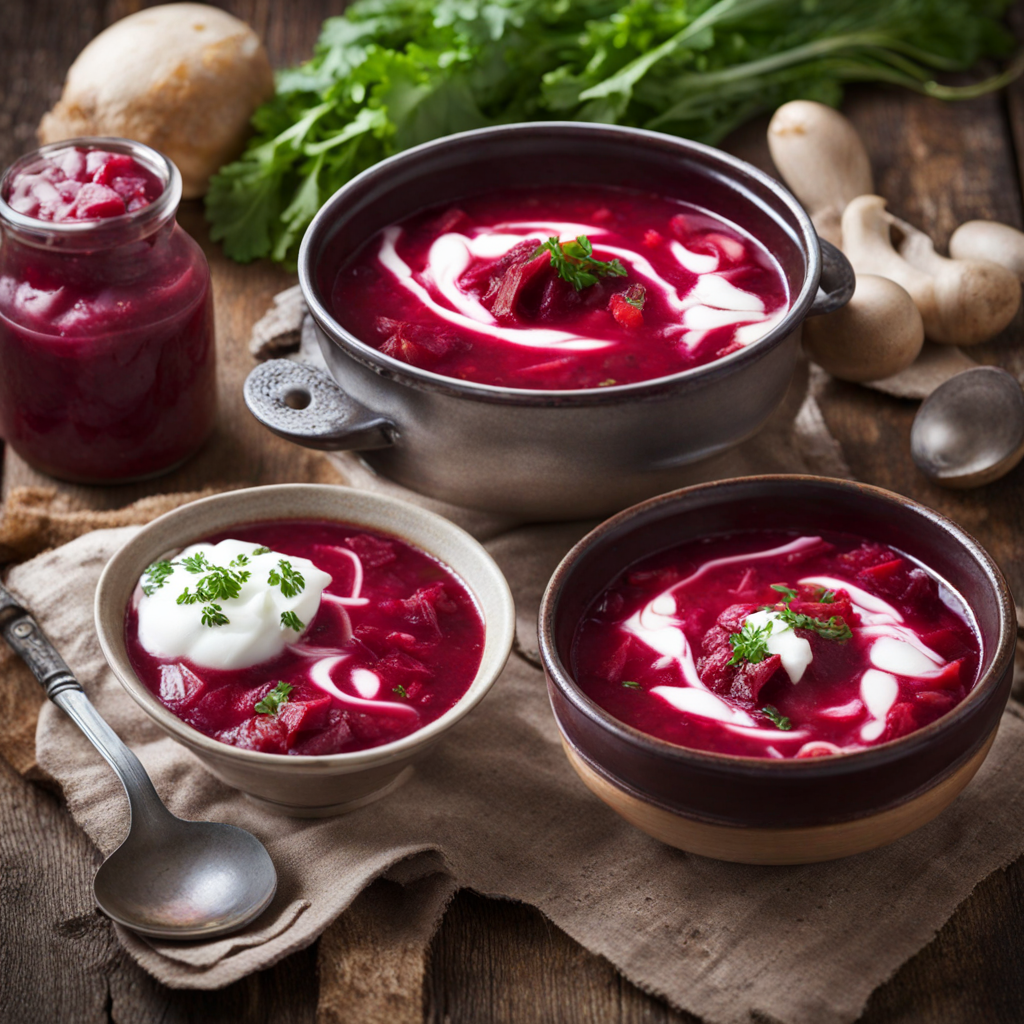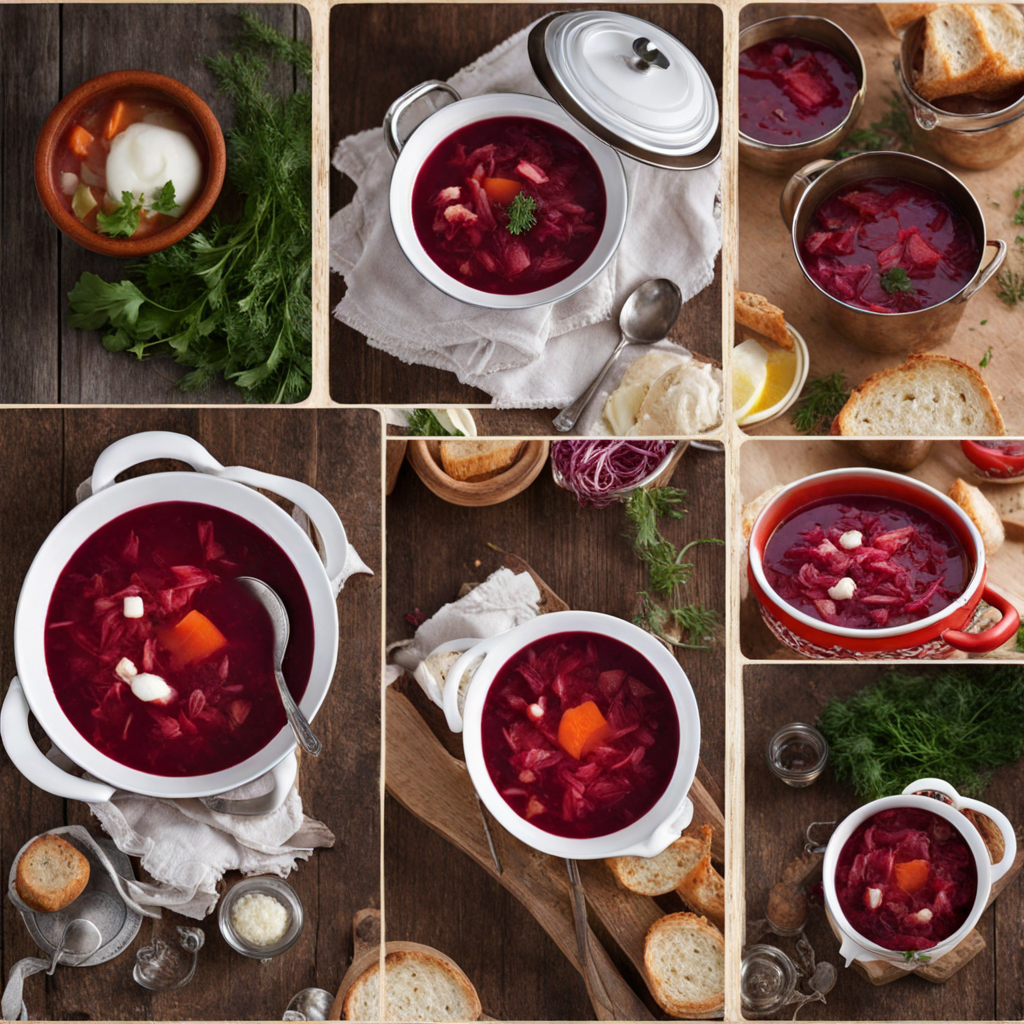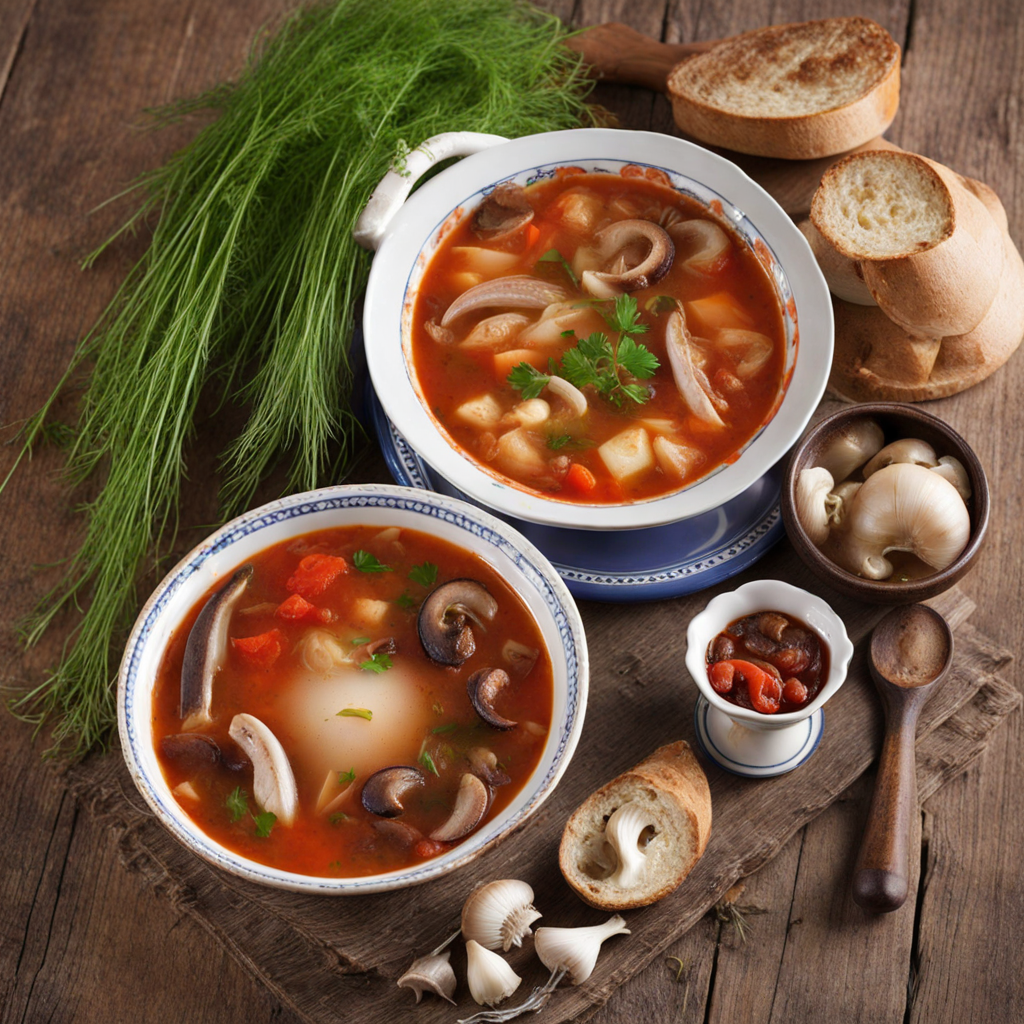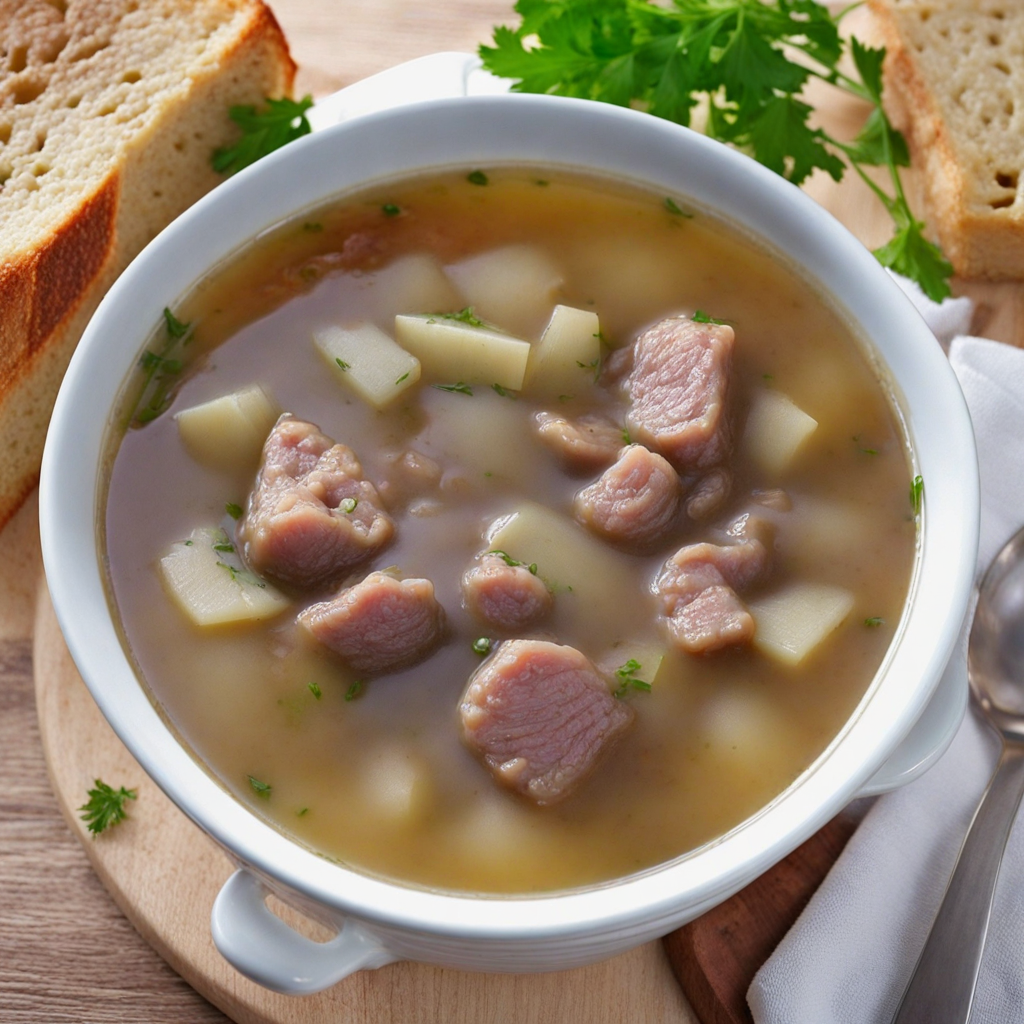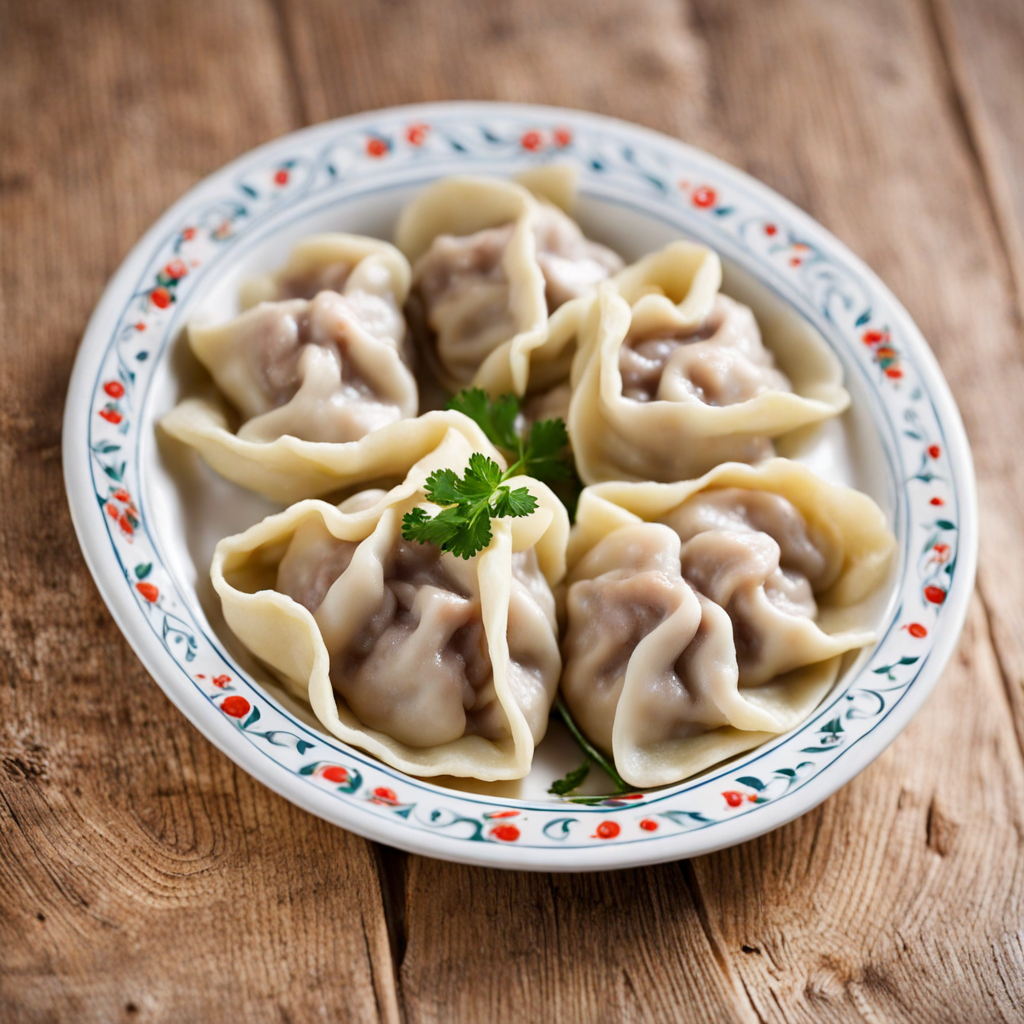Borscht
Borscht is a vibrant and hearty soup that originates from Eastern Europe, particularly associated with Russia and Ukraine. Its most distinguishing feature is its deep crimson color, which comes primarily from the inclusion of beets. This root vegetable not only imparts a striking hue but also lends a sweet, earthy flavor to the dish. Traditionally, borscht is made with a variety of ingredients, including cabbage, carrots, potatoes, and sometimes meat, creating a rich tapestry of textures and tastes that warm the soul. One of the most delightful aspects of borscht is its versatility; it can be served hot or cold, making it suitable for different seasons and occasions. The soup is often enhanced with a dollop of sour cream, which adds a creamy tang that beautifully balances the sweetness of the beets. Fresh herbs, such as dill or parsley, are frequently sprinkled on top, providing a burst of freshness that elevates the dish. The combination of flavors in borscht is both comforting and complex, making each spoonful a delightful experience. As you dive into a bowl of borscht, you’ll find that it embodies the essence of Russian home cooking—simple yet deeply satisfying. The dish not only nourishes the body but also tells a story of cultural heritage and tradition. Whether enjoyed on a chilly evening or as part of a festive gathering, borscht invites you to explore the rich culinary landscape of Russia, promising a memorable journey for your taste buds.
How It Became This Dish
Borscht: A Culinary Icon of Russia and Beyond Borscht, a vibrant beetroot soup often associated with Eastern European cuisines, particularly Russian and Ukrainian, is more than just a nourishing dish; it is a cultural symbol steeped in history and tradition. Its origins are complex, reflecting the rich tapestry of influences that characterize the region's culinary heritage. Over the centuries, borscht has evolved from a simple peasant meal into a celebrated dish that embodies the spirit of Eastern European culinary identity. Origins and Early History The roots of borscht can be traced back to ancient Slavic traditions, with its name derived from the Old Slavonic word "borshch," which refers to a type of wild beet commonly found in the region. The earliest versions of borscht likely emerged in the 14th century, primarily in Ukraine, where beets were cultivated and used in various dishes. Initially, borscht was a simple, rustic stew made from foraged ingredients, including wild herbs, sour rye bread, and fermented grains, reflecting the agrarian lifestyle of early Slavic communities. As trade routes expanded and cultural exchanges flourished, the dish began to incorporate new ingredients. By the 17th century, borscht had evolved to include not just beets but also cabbage, potatoes, carrots, and various meats, depending on the region and availability of resources. The addition of these ingredients not only enhanced its flavor but also made it a more substantial meal, suitable for both impoverished peasants and the aristocracy. Cultural Significance Borscht is more than just a dish; it is a symbol of hospitality and community in Eastern European cultures. Traditionally, borscht is served during significant life events, such as weddings, holidays, and family gatherings. In Russian and Ukrainian households, it is often prepared in large quantities, allowing families to share it with neighbors and friends, reinforcing social bonds. In addition to its communal aspect, borscht has also been linked to national identity. In Ukraine, for instance, it is considered a national dish, celebrated for its rich flavors and vibrant color, reflecting the lush agricultural landscape of the country. The Ukrainian version, known as "borshch," often includes a variety of meats and is served with a dollop of sour cream, while the Russian variant may lean more toward a vegetarian preparation, emphasizing the earthy flavors of beets and herbs. The significance of borscht extends beyond the table. It has been the subject of numerous folk tales, songs, and literary works, symbolizing home, warmth, and resilience. During periods of hardship, such as during World War II, borscht became a dish of survival, a reminder of the comforts of home amidst adversity. Development Through Time The 19th and 20th centuries marked significant developments in the preparation and presentation of borscht. With the rise of the Russian Empire and the movement of people across borders, regional variations of borscht began to emerge. In cities like St. Petersburg and Moscow, chefs began to refine the dish, introducing more sophisticated cooking techniques and presentation styles that appealed to the growing bourgeois class. The industrial revolution also played a role in the evolution of borscht. As urbanization increased, the availability of ingredients changed, and canned goods became more common. This led to the introduction of convenience foods, including canned borscht, which allowed urban dwellers to enjoy the dish without the time-consuming preparation. The mid-20th century saw borscht gain international recognition, particularly during the Cold War era when Eastern European cuisines began to be showcased in Western countries. Borscht was often presented as an exotic dish, embodying the flavors of the mysterious East. It became a staple in Jewish delis and restaurants, where the Jewish diaspora adapted the recipe, incorporating elements of their own culinary traditions. In the United States, borscht became associated with Eastern European Jewish culture, often served as a cold soup in summer months, garnished with dill and accompanied by rye bread. This adaptation showcased the versatility of the dish, allowing it to transcend cultural boundaries while retaining its essential character. Contemporary Interpretations In recent years, borscht has experienced a renaissance, with chefs and home cooks alike experimenting with new ingredients and presentation styles. Modern interpretations of borscht often incorporate seasonal vegetables, artisanal broths, and innovative garnishes, reflecting contemporary culinary trends and dietary preferences. The rise of plant-based diets has also influenced the way borscht is prepared and enjoyed. Many people are now opting for vegetarian or vegan variations, replacing traditional meat broth with vegetable stock while still maintaining the dish's signature depth of flavor. This adaptability speaks to borscht’s inherent nature as a peasant dish—rooted in simplicity and the use of available resources. Moreover, borscht has found its way into the global culinary scene, featured in high-end restaurants and food festivals, where chefs showcase their unique takes on this classic dish. The vibrant color and rich flavors of borscht make it a visually appealing option, perfect for Instagram and social media sharing, further popularizing it among younger generations. Conclusion Borscht is more than just a beet soup; it is a dish rich in history and cultural significance. From its humble origins as a peasant meal to its status as a beloved national dish, borscht embodies the values of community, resilience, and adaptability. As it continues to evolve, borscht remains a culinary emblem of Eastern European identity, bridging the past and present while inviting new interpretations and appreciation around the world. In a world increasingly inclined towards fusion and experimentation, borscht stands as a testament to the power of food to connect people across cultures and generations, reminding us that a simple bowl of soup can carry with it a world of history, tradition, and love.
You may like
Discover local flavors from Russia


